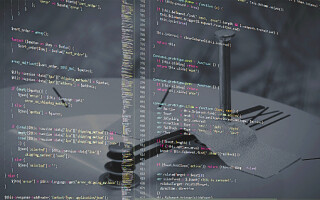How New-Age Technologies are Transforming Retail for the Better
September 15, 2020
Story

A recent study by McKinsey estimates that the IoT in the retail industry will have an economical impact ranging from approximately $410 billion to $1.2 trillion per year by 2025.
The Internet of Things (IoT), cloud, and machine learning have changed traditional retail scenarios, giving rise to connected retail that provides organizations with innovative opportunities to collect and examine data, and ensure successful business. A recent study by McKinsey estimates that the IoT in the retail industry will have an economical impact ranging from approximately $410 billion to $1.2 trillion per year by 2025. Integrating IoT, machine learning and cloud computing services in the retail environment will not only reduce IT costs, but also streamline workflows.
Let’s take a look at how these new technologies are transforming and stimulating key benefits for the retail industry:
Stock and storage monitoring
Storage containers containing raw materials or products can be tracked using IoT devices, which are based on location tracking sensors like GPS sensor. The location tracking device will have a location sensor attached to it which will have the capability to broadcast its location via GPS and remote satellites. The captured location details is sent to the cloud for processing and then pushed to any connected mobile/desktop application where users can run time, see the location and monitor it.
Also, a combination of IoT sensor devices can be used to monitor environmental storage parameters for raw materials like edible or chemical goods.
Demand forecasting using Machine Learning (ML)
Demand sensing algorithms, which are based on Machine Learning, extracts data from billing systems and warehouses to understand sales movements. These algorithms continuously and automatically analyze factors that are influencing sales. They constantly offer new adjustments for sales expectations. Models based on predictive sales analytics can be used to clean the data that is extracted from the systems to check if the data variables are relevant to the organization, or if can impact sales. Data sensing algorithms make use of these cleansed data and help various companies build predictive models to understand and analyze the outcome of sales in the market. Many companies reported an increase of 5-15% in forecast reliability by integrating machine learning to their existing systems.
Efficient inventory management with smart shelves
Smart shelves have been in the market since early 2000s, helping to check inventory. Amazon and Microsoft are constantly improving their technologies in this area. Smart shelves can be developed using RFID tags, RFID readers, or RFID Antennas. The RFID tag attached to a product transmits data to the RFID reader. The information which is collected from the RFID reader is sent to an IoT device. The data is then received, analyzed, and calculated. The stocks reported from the RFID reader is pushed to cloud databases. Cloud connected mobile applications can help the user understand the database on the go, so that they can manage the inventory more efficiently.
Enhancing customer experience
There are multiple technologies like IoT enabled beacons, automated checkouts, in-store layout optimization, ML based data analytics, etc. used to enhance customer experience.
Beacons are very useful components for IoT. They work as radio transmitters on low energy over BLE/Bluetooth connections. They are usually used to send push notifications on the store mobile applications of smartphones based on the proximity to the user. Some of North America’s top retailers including Macy’s, Target, and Urban Outfitters use beacon technology in their stores.
Also, IoT devices like smart carts or self-checkout kiosks can be installed in the store so that consumers will not have to wait in long lines. Self-checkout kiosks have barcode scanners where users will have to log-in to their account/mobile payment apps, scan the codes of the products and add it in the cart to process the payment automatically.
Moreover, layout optimization also helps the retailer understand what products are sold the least and where they can put them moving forward. To achieve this, retailers can use aisle analytics software with infrared sensors to understand customer patterns. The sensors observe traffic patterns and identify where customers spend the most time to determine a spot to place the most popular and profitable items. Retailers can also add value by generating personalized product recommendations for buyers with the help of cloud computing and analytics.
To summarize, retail businesses are seeing growth from integrating and gradually switching to new-age technologies. This helps reduce operational and infrastructure costs, improve data security, provide real-time access to inventory, streamline supply chain management, and provides an enhanced customer experience elevating their businesses to next level.
About the Author
Rajvi Kamdar has been associated with VOLANSYS past 6 years, currently designated as Senior Embedded Engineer. She has expertise in architecting, designing and developing embedded solutions based on IoT that brings in value to customers solution. She is a tech enthusiast who is keenly interested and working on developing ML and AI concepts.




